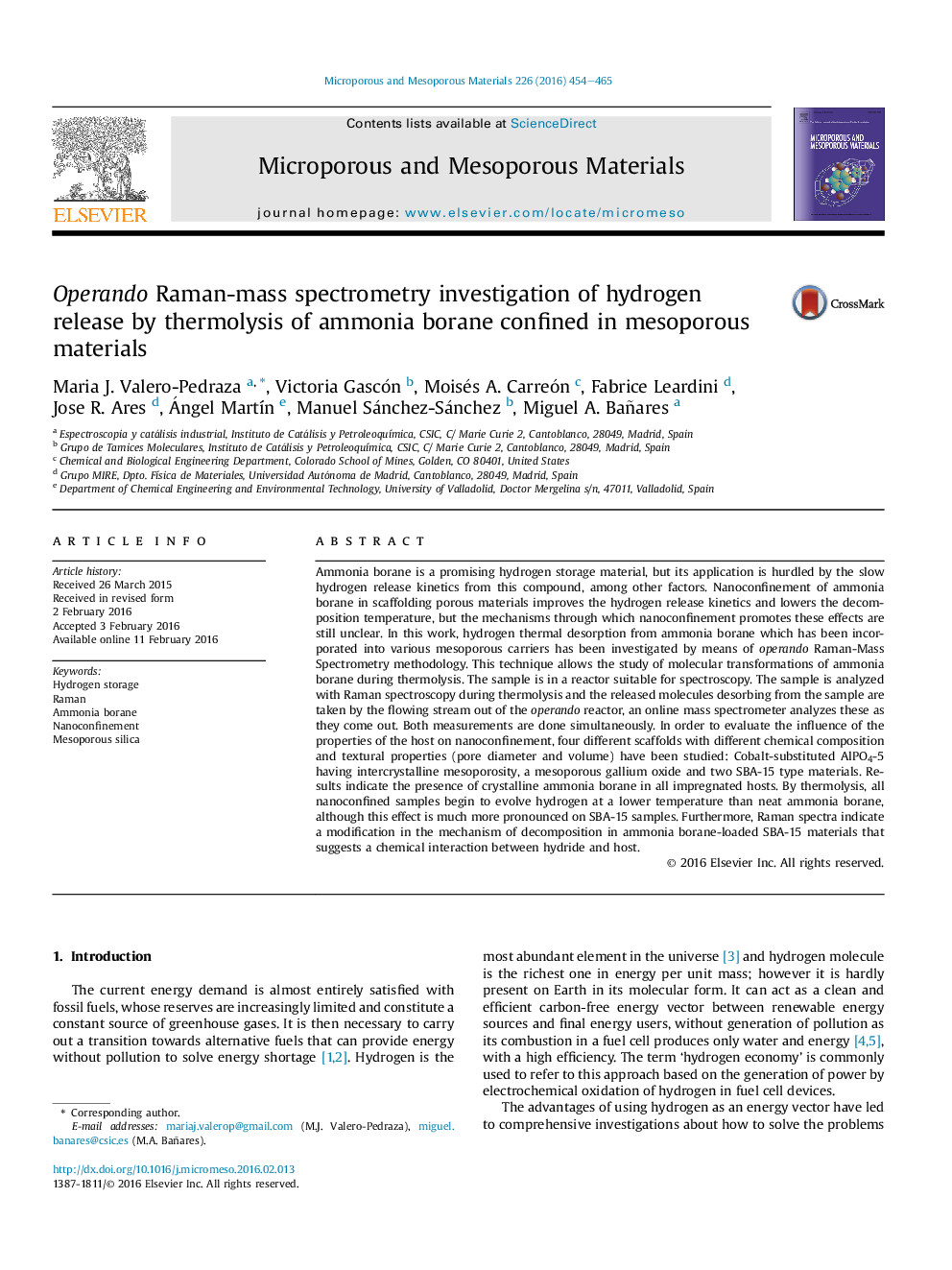| کد مقاله | کد نشریه | سال انتشار | مقاله انگلیسی | نسخه تمام متن |
|---|---|---|---|---|
| 72216 | 49013 | 2016 | 12 صفحه PDF | دانلود رایگان |
• Ammonia borane was loaded in four supports: two mesoporous silicas, GaO3 and CoAPO-5.
• Nanoconfinement of ammonia borane facilitates hydrogen release at lower temperatures.
• The formation of gaseous BNHx fragments was also reduced by nanoconfinement.
• Polyiminoborane was not formed during thermolysis of AB loaded in mesoporous silica.
Ammonia borane is a promising hydrogen storage material, but its application is hurdled by the slow hydrogen release kinetics from this compound, among other factors. Nanoconfinement of ammonia borane in scaffolding porous materials improves the hydrogen release kinetics and lowers the decomposition temperature, but the mechanisms through which nanoconfinement promotes these effects are still unclear. In this work, hydrogen thermal desorption from ammonia borane which has been incorporated into various mesoporous carriers has been investigated by means of operando Raman-Mass Spectrometry methodology. This technique allows the study of molecular transformations of ammonia borane during thermolysis. The sample is in a reactor suitable for spectroscopy. The sample is analyzed with Raman spectroscopy during thermolysis and the released molecules desorbing from the sample are taken by the flowing stream out of the operando reactor, an online mass spectrometer analyzes these as they come out. Both measurements are done simultaneously. In order to evaluate the influence of the properties of the host on nanoconfinement, four different scaffolds with different chemical composition and textural properties (pore diameter and volume) have been studied: Cobalt-substituted AlPO4-5 having intercrystalline mesoporosity, a mesoporous gallium oxide and two SBA-15 type materials. Results indicate the presence of crystalline ammonia borane in all impregnated hosts. By thermolysis, all nanoconfined samples begin to evolve hydrogen at a lower temperature than neat ammonia borane, although this effect is much more pronounced on SBA-15 samples. Furthermore, Raman spectra indicate a modification in the mechanism of decomposition in ammonia borane-loaded SBA-15 materials that suggests a chemical interaction between hydride and host.
Figure optionsDownload as PowerPoint slide
Journal: Microporous and Mesoporous Materials - Volume 226, 15 May 2016, Pages 454–465
